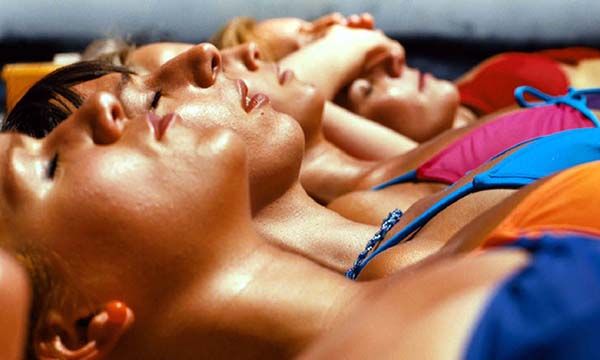It’s 1995 in Buenos Aires, and a group of women who share a salsa class sunbathe at a terrace of a building, dreaming of a vacation in Cuba.
Gustavo Taretto, originally from Argentina, delves into this reality in “Sunstroke,” which had its North American premiere at Miami Dade College’s Miami International Film Festival. This is his second film after his first successful feature “Sidewalls,” a romantic comedy about finding love in the age of social media.
Taretto’s “Sunstroke” is an “experimental” comedy that depicts life in Buenos Aires during the ‘90s when mass consumption and vacations abroad were more rampant thanks to the “uno a uno” economy in which one dollar equaled one peso.
The Miami Hurricane sat down with Taretto, who spoke in Spanish, to talk about the inspiration for the film and his artistic choices.
The Miami Hurricane: What was the inspiration for the film?

Gustavo Taretto: The inspiration was the ‘90s in my country. It was a very particular decade for my country. Above all, it was a decade of technological change. But politically and economically, it marked the country’s history because there was something called convertibility – one dollar cost one peso and one peso cost one dollar. … It was a moment when Argentinians became a little crazy. A majority of them traveled the world, making bad economic choices – to buy, to buy, to buy. And the fashionable destination in the ‘90s was Miami, or more like shopping in Miami. There was like an exodus of people who went to Miami to buy or traveled to the Caribbean for vacation.
… The “uno a uno” allowed people to leave Argentina more easily. The majority of people planned their trips abroad. My way of thinking about this decade was to make a film about the people who could not leave, who could not access this, who stayed in the margins of this consumption party. That’s how it became six women of different ages who are friends from salsa class who meet to sunbathe in a terrace far from the country’s reality that everyone was able to achieve. As a result, [“Sunstroke”] is about this dream of the ‘90s with respect to the frustration of not accessing this dream.
TMH: Why salsa?
GT: In the nineties, one of the trendiest things was Cuba. The island of Cuba with all its myths surrounding Cuba. The idea of communism. … This caught people’s attention. Cuba was always the subject of conversation in Buenos Aires … because Cubans were generally regarded well. One of the principal figures in Cuba was an Argentinian, Che Guevara. … On the other hand, the myths. There were people who had an idealized idea about Cuba. That there wasn’t any illiteracy, no one starved, as if liberties were not that important. Cuba was a country that caught people’s attention. … It was not big ideas with respect to communism or freedom, more like questions about daily life. … Also, there were many people who danced Cuban salsa in Buenos Aires as well as salsa from Central America. And [the six women] have this idealized idea of white sand, palm trees and clear waters.
It was also a time when the relationship toward work changed. In general, my parents worked all year to have 20 days of vacation once a year. The people then had this scheme: suffer all year to enjoy 20 days. … That’s where [“Sunstroke”] comes in. The film is, to a certain degree, an experiment because it does not fulfill the most important element of cinema: to tell a story. It simply tells the story of an afternoon about these women who dream of visiting Cuba, and throughout the day, this dream transforms into an obsession. In other words, from a dream to an annoyance.
TMH: And why solely one day instead of a more traditional narrative?
GT: I liked the experiment of telling a story in one location in one day. And … I have always been interested in the ‘90s because in the ‘90s people – and before as well – tanned without control. People were not as conscious as today that the sun can be damaging and that one needs to apply sunscreen. In reality, during the ‘90s, which were a frivolous decade for Argentina, being tanned was synonymous with status.
TMH: How long did filming take?
GT: Twenty-four days. … And it was made under the actual sun in the summer with days as hot as 30 to 35 degrees Celsius. The film was made … without artificial light. It’s all purely sunlight.
TMH: Was this difficult to realize?
GT: It was stifling. We could not stay more than an hour to an hour and a half. We had to leave and put on sunscreen to cover ourselves because some people fainted, and others were dehydrated to make real the film’s conditions. … The fictional process was very similar to the team shooting the film. Because of this, it’s a very particular film, an experiment.
TMH: Are there any films that have inspired you?
GT: I really like Michel Gondry, a French director and Wes Anderson. … I like how [Anderson] works aesthetically and how he succeeds in depicting human conflicts from a very particular way in his own universe. … “The Life Aquatic,” which is my favorite movie of his, tells a story about father and son inside an absurd world.
To purchase tickets and for more information, visit miamifilmfestival.com.






